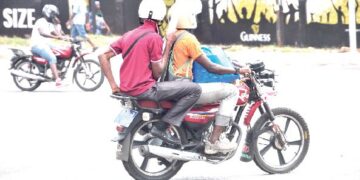Since its dramatic emergence in 2015, the Islamic State (IS) has evolved from a centralised proto-state headquartered in Iraq and Syria into a decentralised and highly adaptive network of regional affiliates. Among the affiliates of IS are Islamic State Khorasan Province (ISK), Islamic State in Iraq and the Levant (ISIL), IS Sahel Province (ISS), IS West Africa (ISWA), IS Sinai, IS Libya, IS Somalia (ISS), IS Mozambique (ISM) and IS Central Africa (ISCA). While its territorial “caliphate” was dismantled by 2019, IS’s operational model shifted toward low-cost, high-impact attacks, enabling it to remain a potent global security threat. Nowhere is this transformation more visible—and more destabilising—than in Africa, where IS affiliates continue to shape the continent’s security architecture through a mix of insurgency, territorial control, and ideological propagation.
The Global Terrorism Index 2025 underscores that Africa has become a principal arena in the Islamic State’s post-caliphate strategy. While overall IS-linked attacks have declined globally since 2022, Africa has witnessed a sustained, if uneven, escalation in IS affiliate activities, with regional chapters adapting their strategies to local grievances, state fragilities, and intergroup dynamics.
IS West Africa (ISWA)
In West Africa, Islamic State West Africa Province (ISWA) has emerged as a formidable jihadist force since its inception in 2015, following a schism within Boko Haram. ISWA, which operates predominantly in Nigeria and the Lake Chad Basin, has diverged from Boko Haram’s indiscriminate violence by attempting to position itself as a quasi-state actor—offering rudimentary public services, collecting taxes, and enforcing its own version of Islamic governance.
However, ISWA remains brutal in its enforcement mechanisms, targeting civilians who resist its rule or collaborate with government forces. High-profile attacks, such as the 2020 massacre of 89 soldiers in Niger and the destruction of humanitarian infrastructure in Nigeria’s Monguno, have cemented its notoriety. Yet, the group has faced increasing pressure. The death of Boko Haram’s leader Abubakar Shekau in 2021 initially raised expectations of ISWA’s expansion, but renewed conflict between the two factions culminated in significant losses for ISWA in late 2024.
Despite its past dominance, ISWA recorded a significant reduction in attacks and fatalities in 2024, with 158 deaths in Nigeria—its lowest figure since 2018. Similarly, fatalities linked to ISWA in Niger also declined. These trends suggest operational constraints, partly due to intensified military offensives and infighting with rival jihadist groups.
IS-Sahel
The Islamic State Sahel Province (IS-Sahel), born out of the Islamic State in the Greater Sahara (ISGS), now operates autonomously and has become one of the most expansionist arms of IS in Africa. Concentrated in the Liptako-Gourma tri-border region—spanning Mali, Niger, and Burkina Faso—IS-Sahel has leveraged state absence, porous borders, and local grievances to entrench its presence.
Unlike its earlier phase of indiscriminate violence, IS-Sahel has gradually transitioned to a strategy of territorial consolidation. The group has established logistical embargoes, controlled trade routes, and implemented governance structures, including Sharia-based courts. By August 2023, IS-Sahel reportedly doubled its territory in Mali, consolidating a de facto jihadist enclave. The group has also invested in long-term sustainability through targeted recruitment of child soldiers and embedding within local communities.
In 2024, IS-Sahel focused on entrenching its presence, carrying out attacks in Nigeria, Niger, Mali, and Burkina Faso. Its evolution from a marauding militia to a proto-state actor mirrors earlier IS tactics in Iraq and Syria, posing a serious challenge to the already fragile states in the region.
Islamic State Central Africa Province
Islamic State Central Africa Province (ISCAP) represents another crucial node in IS’s African network, operating in the Democratic Republic of the Congo (DRC) and Mozambique. ISCAP’s DRC wing, a metamorphosis of the Allied Democratic Forces (ADF), has exploited the country’s complex conflict landscape to wage a violent campaign against civilians and state forces alike.
In 2024, ISCAP’s Congolese faction intensified its attacks, most notably the massacre in Mayikengo that claimed at least 42 lives. These attacks reflect the group’s entrenched insurgency, supported by illicit economic activities including illegal mining and timber trafficking. As of mid-2024, over 2.4 million people had been displaced in eastern DRC due to escalating violence, including more than 200,000 directly linked to IS-affiliated conflicts.
In Mozambique, the Islamic State Mozambique Province (ISM), once part of ISCAP, has developed into a distinct and resilient insurgency. Emerging from a local Salafist sect in Cabo Delgado, ISM has targeted LNG infrastructure and displaced over 200,000 civilians in the first half of 2024 alone. While international forces—including Rwandan troops and the Southern African Development Community—have achieved tactical victories, ISM continues to exploit governance vacuums and porous borders to regroup and launch asymmetric attacks.
IS-Libya
In Libya, the Islamic State – Libya Province (IS-LP), though weakened, remains a latent threat. Once controlling swathes of territory including Sirte, the group has since reverted to a mobile insurgency following sustained counterterrorism operations. While no attacks were recorded in 2023 or 2024, IS-LP’s dormant cells and the country’s enduring instability leave open the risk of resurgence.
IS-Somalia
In Somalia, the Islamic State – Somalia Province (ISS) has carved a niche in Puntland’s mountainous regions. Despite its limited manpower compared to al-Shabaab, ISS has maintained its relevance through high-profile attacks, including a deadly suicide assault on a Puntland military base in late 2024. Targeted operations in early 2025 resulted in the death of several ISS fighters and the seizure of strategic outposts, yet the group continues to demonstrate operational resilience.
A decentralised continental threat
The African branches of Islamic State reflect a broader shift toward decentralised, networked jihadism. Each affiliate operates independently, shaped by unique socio-political conditions, yet all remain ideologically tethered to the IS global brand. This decentralisation complicates containment efforts. Unlike the monolithic IS of 2015, today’s IS operates as a constellation of locally grounded but globally connected insurgencies.
Their strategies are not uniform. Some, like ISWA, blend insurgency with rudimentary governance. Others, like IS-Sahel, aim for territorial control and long-term rule. Groups like ISCAP and ISM exploit natural resource economies, while ISS and IS-LP function more as hit-and-run insurgencies. What binds them is a common blueprint: adaptability, ideological resilience, and a keen understanding of local vulnerabilities.
Conclusion
The Islamic State’s African affiliates are not merely remnants of a collapsed caliphate—they are adaptive, embedded, and increasingly influential actors in Africa’s evolving security landscape. As the Global Terrorism Index 2025 illustrates, addressing this threat requires not only military responses but also long-term strategies rooted in governance, regional cooperation, and community resilience. The decentralised nature of IS’s African chapters demands a decentralised yet coordinated response—one that is as flexible and locally informed as the threat itself. To be effective, operations against IS must be intelligence-led.
Reference Institute for Economics & Peace (IEP). Global Terrorism Index 2025: Measuring the Impact of Terrorism. Sydney, Australia: IEP, 2025. Available at: https://www.visionofhumanity.org (Accessed June 2025).






























